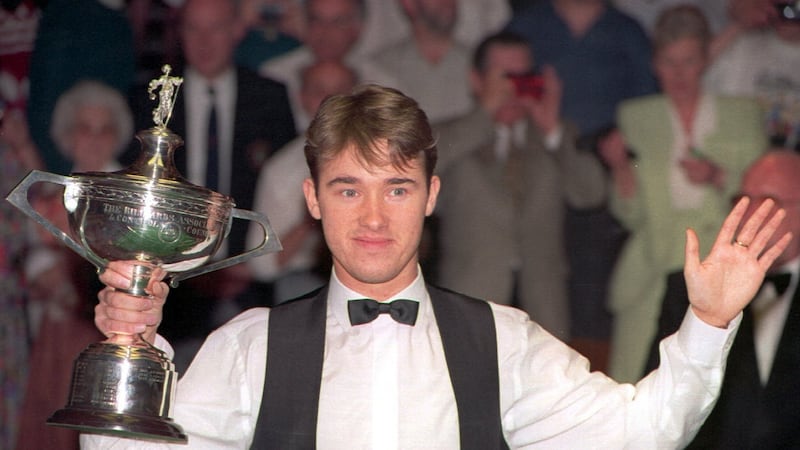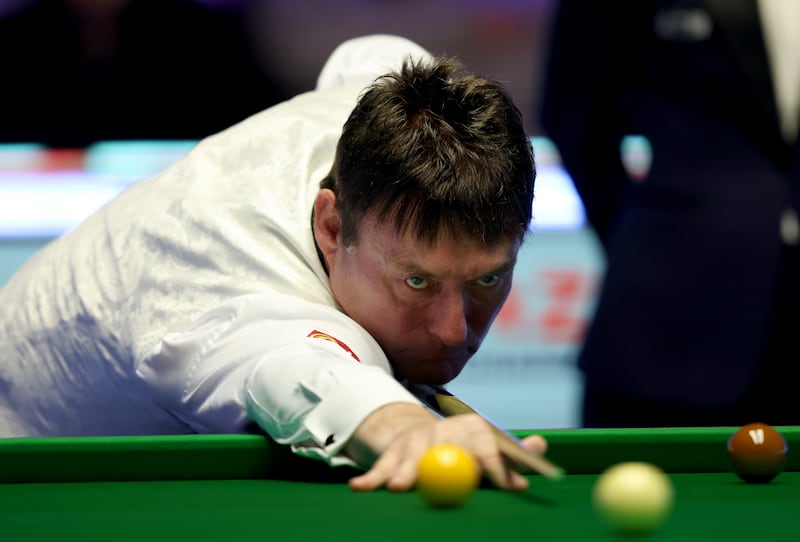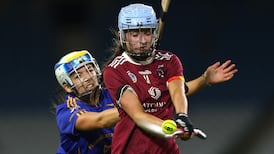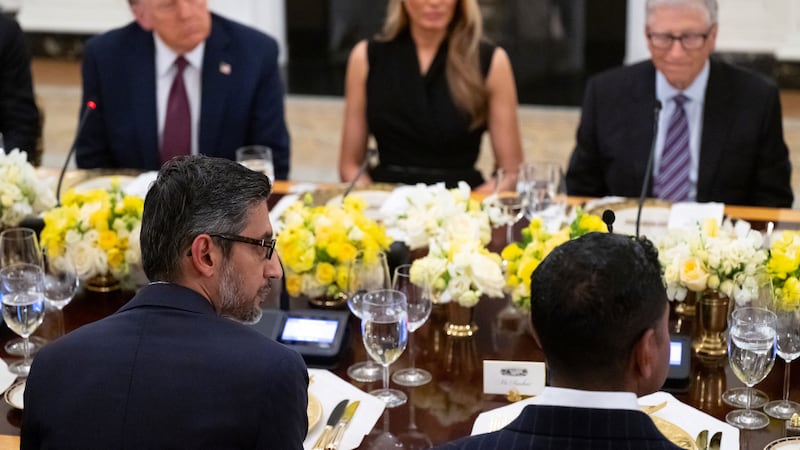In the middle of last week, in a dimly-lit corner of sport’s vast universe, Stephen Hendry was eliminated from the World Snooker Championships in the first round of pre-qualifying.
Buried alive in the small print was Hendry’s 777th career century, and the slightly titillating detail that he was beaten by James Cahill, the nephew of Hendry’s ex-wife – a marriage that had ended sourly, and in the public eye.
It read like a hammed-up plot line from dear old Brookside, or Corrie, on a perky week.
The question it begged, though, was why? What on earth was he doing there?
READ MORE
When Hendry retired from snooker in 2012 one of the things he cited in passing was the humiliation of lining up at the pre-qualifying tournament at the Institute of Sport in Sheffield – the last clearing house before the Crucible, and the same venue where he was thrashed 10-4 by the 88th-ranked player in the world last week.
“It felt degrading,” Hendry said, years later, about his 2012 experience. “That’s no disrespect to other players, but I had owned the Crucible for a decade with seven wins and two finals.”
In 2012 he held his nose and his nerve and made it to the televised stages of the World Championships. In his first match at the Crucible that year he compiled a maximum 147 break, one of only 12 in the history of the tournament.
But such was his state of mind that even executing a monumental frame of snooker on the sport’s grandest stage was unfulfilling. In some perverse way it felt counterfeit. He said later that of the 36 shots it took to make the 147 only six had been played “properly”.
“I’d given every shot a pint of blood to get it in the pocket,” he told Donald McRae in The Guardian.
Hendry took the scalp of John Higgins in the next round, but then Stephen Maguire slaughtered him 13-2, and that was the end.
By his account, the suffering had been going on for about 12 years. In his autobiography, Me and the Table, Hendry wrote about the erosion of his mentality and his confidence and, in the end, his physical capacity to meet the cue ball with pace and make it do his will.

“Of course, it’s psychological,” Hendry said, “and when you strike a cue ball you’re supposed to accelerate through the ball. But as you tighten up, you end up decelerating. By 2012 my game was shot. You’re sitting in your chair watching players leagues below you play shots that you can’t. That destroyed me.”
You wonder how such a thing could happen to one of the greatest snooker players that ever lived? How could he descend from such imperiousness to such fragility?
During the 1990s, when snooker was still a mass audience sport on terrestrial television, Hendry bestrode the game, sitting at the top of the world rankings for eight consecutive seasons. He cultivated the classic profile of an alpha champion, purposely distant from his peers, exuding a force field of invincibility.
But he couldn’t sustain it forever, and when that aura left him he joined snooker’s other starlings, lined up on the telephone wire, one indistinguishable from the next.
Jimmy White turned up at the Institute of Sport as well last week and lasted one round longer than Hendry. Martin O’Donnell saw him off in the round of 112, eliminated by the same score that did for Hendry, 10-4. In White’s case, though, he had never given up the game.
The Whirlwind is 60 now, his brilliance and the nickname it inspired frozen in another time, like fossils. In snooker’s golden era, White’s relentless, heartbreaking pursuit of the world title was a romance in everything but the ending.
He reached six finals and lost them all, four of them to Hendry. In one of those deciders Hendry mopped up the last eight frames in a row when it seemed as if White, at last, was standing on the cusp of victory.
He hasn’t reached the Crucible since 2006, and since 2017 his playing privileges on the tour have been protected by a “wild card” exemption that has already been renewed once, and will need to be renewed again after last week’s loss.
Barry Hearn, the impresario of world snooker, is still convinced by White’s charisma and the antique glory of his back story.
Hendry returned to professional snooker under the same exemption in 2021, but he always said that it wasn’t a full-blown comeback, and he has only dabbled at being a tour player.
Before his appearance at the qualifying tournament last week, he had appeared in just three ranking tournaments this season, losing in the first round at each event, and winning just one frame. Since his resumed playing two years ago he has played just 15 matches, and lost 12 of them.

So, why? It was clear from his autobiography that by the time he retired Hendry’s finances were not in a healthy state, but he has worked consistently on television and in other areas of the game over the last 10 years, and it surely wasn’t money that brought him back to the table. White’s prize for reaching the round of 112 last week was £5,000; Hendry got nothing for losing in the round of 144.
Hendry had idolised White growing up, and they became friends once Hendry pulled up the shutters in the later years of his career, and started to mix with the other players on tour.
Two years ago, on Hendry’s return to the World Championship pre-qualifying tournament, he was drawn against White, and their match generated a kind of mawkish fascination.
Hendry warned the rubber-neckers that it wouldn’t be a pretty spectacle and he was right; the first five frames took nearly three hours to complete, and the highest break of the match was just 66. In the end Hendry won, 6-3, and was promptly diespatched 6-1 by Xu Si in the next round.
“It is a very distant dream in the future that one day I’ll walk out at the Crucible again,” said Hendry last week. “It is very doubtful. Huge odds against, but that is the dream.”
Who are we to query and wonder why?

















